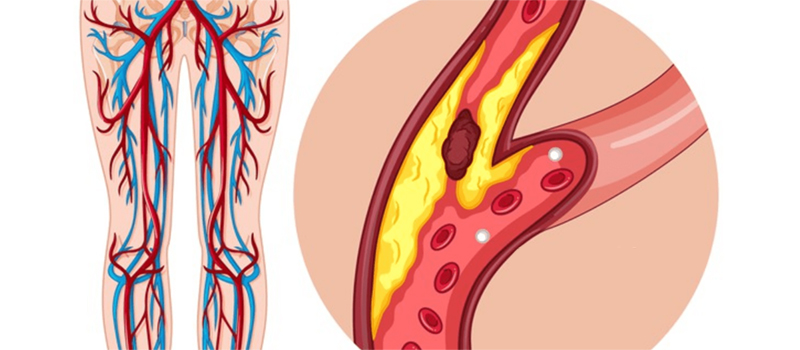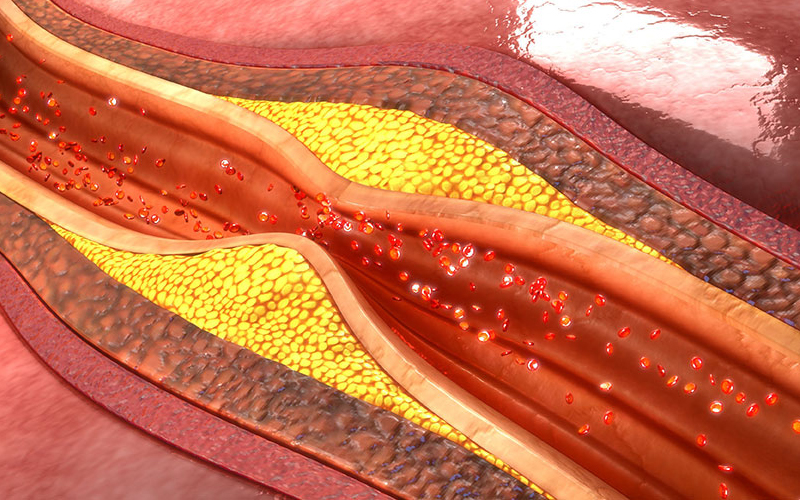Peripheral Artery Disease (PAD)
Peripheral artery disease is a condition marked by reduced blood flow to your limbs. Blood circulation is responsible for providing tissues with the essential nutrients and oxygen while simultaneously removing waste products.
When one develops peripheral artery disease, or PAD, their limbs, especially their legs, don’t receive enough flow of blood, leading to significant complications.
The disease is caused by fat deposits and calcium that build up in the artery’s walls, consequently reducing blood flow to the tissues, a condition known as atherosclerosis.
Risk factors that may cause one to develop this condition include smoking, diabetes, high blood pressure, obesity, and aging. People over the age of 65 or those at 50 but with other underlying factors have a more significant risk of developing peripheral artery disease.

Symptoms
Some people with peripheral artery disease may lack any apparent symptoms, while others may experience pain while walking, claudication. Claudication is cramping or muscle pain experienced when
you activate your muscles through physical activity.
However, the pain disappears after a few minutes of rest. The severity of the condition, claudication, may range from mild to debilitating, making it hard for you to walk or perform any physical activity in severe cases.
Symptoms of peripheral artery disease include:
· Painful cramps in one or both thighs, hips, or calf muscles, especially after physical activity.
· Weakness or numbness in your leg.
· Cold temperatures in your limbs compared to other body parts.
· Sores on your limbs that won’t heal.
· Changes in your legs’ color.
· Slow hair growth or even hair loss on your limbs.
· Shiny skin on your limbs.
· The slow growth of toenails.
· Weak to no pulse in your limbs.
· Erectile dysfunction in men.
· Experiencing pain in your arms when performing physical activities.
Diagnosis
There are various tests that your doctor could perform to determine if you’re affected by this condition. These tests include:
Physical exams
Physical exams include looking for; wounds that heal poorly, decreased blood pressure, a weak or absent pulse, or a whooshing sound over your arteries when examined through a stethoscope.
Ankle branchial index
This test compares your arm’s blood pressure with that of your ankle to using a blood pressure cuff. The cuff measures the blood pressure and flow to determine if there are any irregularities.
Ultrasound
Ultrasound imaging techniques can help your doctor evaluate blood flow and identify any blocked or narrowed arteries that may need to be treated.
Blood tests
Your doctor could use your blood sample to measure your cholesterol and triglycerides to check for
diabetes.
Angiography
In this procedure, your doctor uses contrast dyes and an x-ray imaging machine to help them get images
of your arteries for assessment. Using these images, they can determine which vessels are affected and
what treatment procedure they could use.
Treatment
Treating peripheral artery disease has two main goals; managing the symptoms and stopping the
condition’s progression. Your doctor could prescribe you medication for your cholesterol, high blood
pressure, blood sugar, blood clots, and symptom relief.
Angioplasty
During this treatment procedure, a catheter is inserted through a blood vessel to the affected artery. A balloon is inflated to flatten the wall widening the artery’s circumference to increase blood flow. Your doctor could also insert a mesh that’ll help keep the artery open.
Bypass surgery
Bypass surgery can be performed on the affected area using a blood vessel or synthetic vessel to allow
the blood to bypass the blocked artery.
Thrombolytic therapy
This procedure is done when a clot blocks your artery. Your doctor could inject you with a drug that’ll dissolve the clot and allow blood to flow regularly.

Conclusion
If you are affected by peripheral artery disease, you probably need to know that a specialist can treat your condition, and you don’t have to live in pain. The best place to get the best treatment is at
Washington Vascular Specialists. Their 20 years of experience and comfortable, effective, and affordable
care make them the best choice near you.
Don’t live in pain; get in touch with Washington Vascular Specialists and get the care you deserve.



